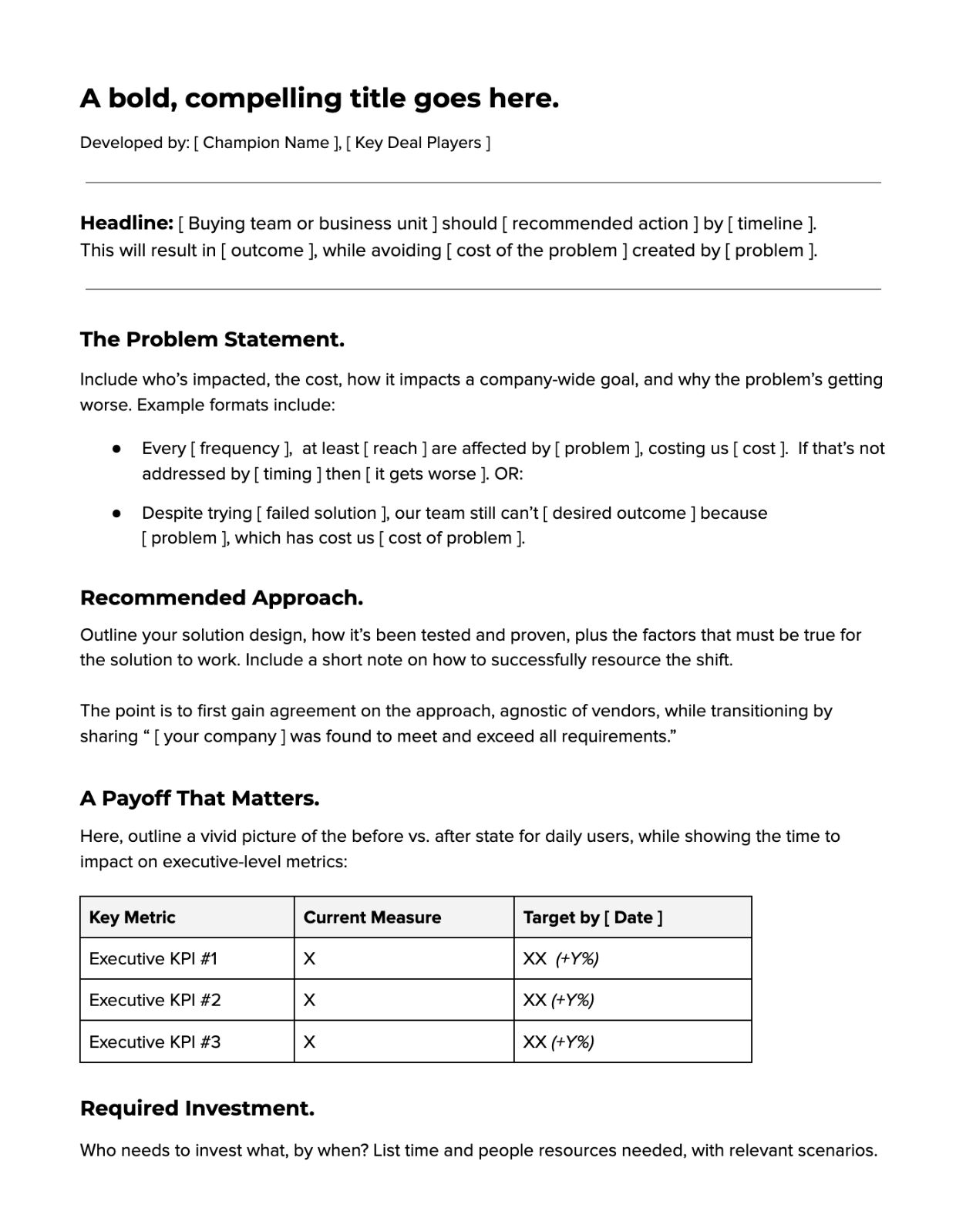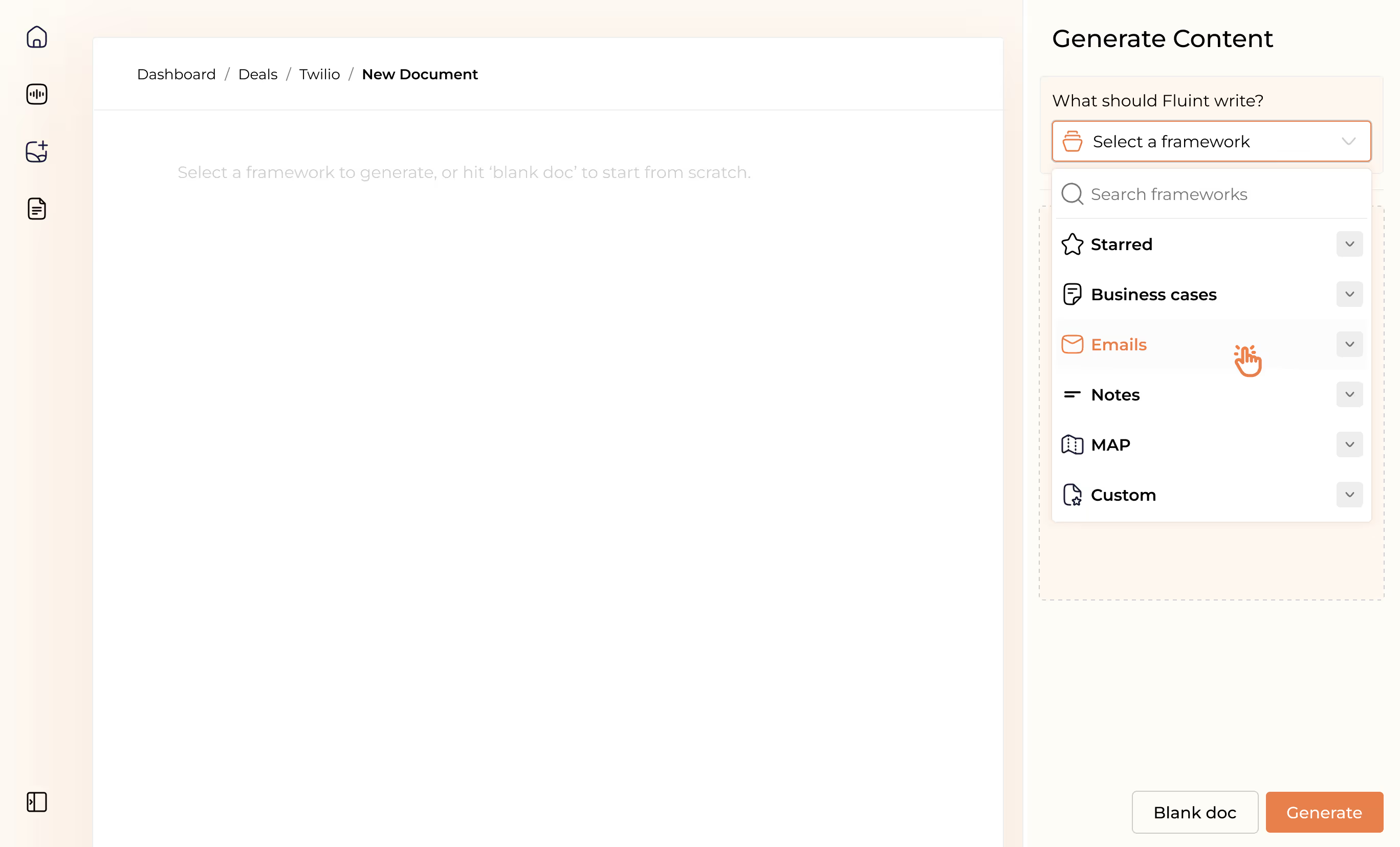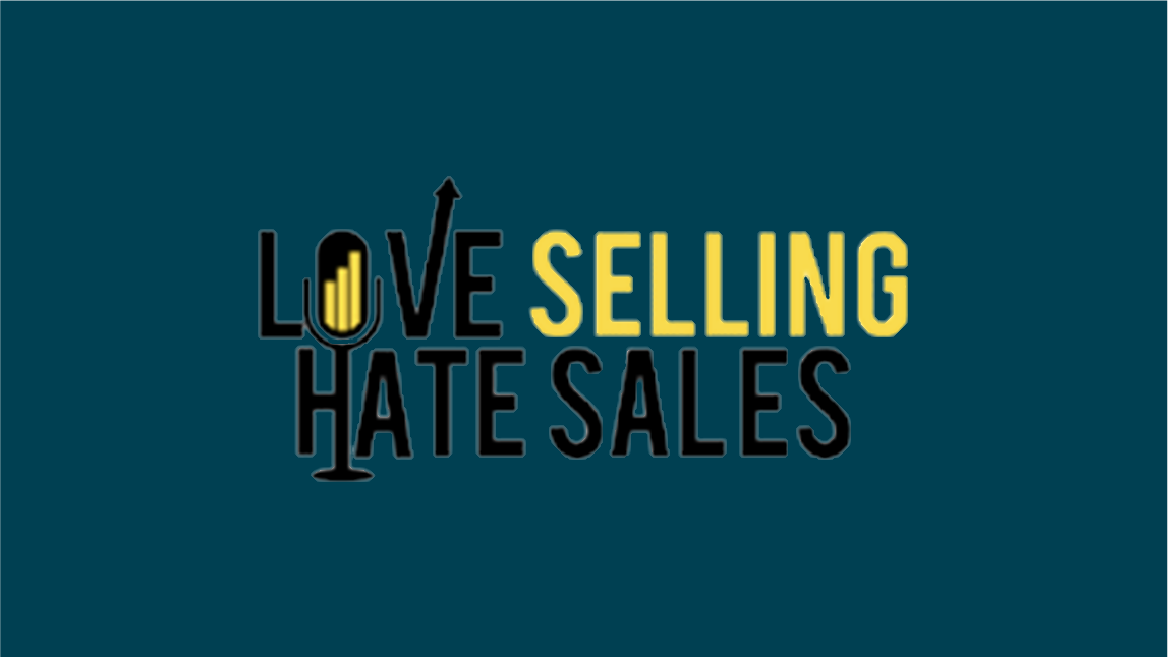The Hidden Link Between Deeper Discovery and Crafting Business Cases


If you haven’t experienced this, it’s kinda hard to explain:
Writing a business case is the best way to sharpen your discovery.
It's also the #1 thing AE's realize when they try it for the first time:
“Woah, my discovery is 10X more crisp now.”
But the link between writing and discovery isn't super obvious. In fact, it's usually a reality that's hidden from anyone who hasn't tried this before.
Here's why this link is so strong. Writing immediately clarifies:
- What you already knew, but didn’t realize.
- What you don’t yet know, but need to.
Here's what I mean.
Your Business Case = Your Discovery Roadmap
The process of writing a business case = a good framework + your buyer’s words.
It's a process of filling in the blanks, kind of like that game, Mad Libs.
When you approach your business case this way, you'll quickly see where you don't have enough inputs to complete the framework.
Where are the gaps that you need to fill in, together, with deeper discovery?
In other words, a solid business case framework gives you a point of view on:
- When to linger on a topic vs. when to push ahead.
- Where gaps and assumptions still exist in the storyline.
- Whether the input you’ve gathered is compelling, or not.
Finding Discovery Gaps with Business Case Drafts
This idea is a sub-point below our overall point-of-view: the business case is the sales process.
Which guides the way we're developing what Fluint users experience daily:
- End your very first discovery call with a first draft.
You won't have 100% of the inputs you need. But getting something down on paper kicks off how you'll create champions.
- Write your first drafts with each buyer's own words.
Instead of templated marketing speak. To encourage more collaboration and that feeling, "Finally, someone who gets me."
- Tailor your discovery based on gaps in your first draft.
Check out the image below. The left side compares the business case on the right (which Fluint drafted using what was available in call transcripts), to a set of best practices.
Are there numbers in the problem statement, for example? If not, what question should you ask in your next call, to develop the message?

You can also see this in action if you watch from minute 2:30+ in this video. And if this looks interesting, head to www.fluint.io/get-started.
The DIY Exercise for Your Next SKO
You can also give this a shot the good old fashioned way, using this exercise. Because again, this is one of those things you need to experience.
Incorporate it into your next team meeting, training event, or an SKO.
Here's how it works:
1/ Grab this framework, The 1-Page Business Case:

2/ Pick out two or three deals in your pipeline.
3/ Using only the inputs you have now, fill in as much of the framework as you can.
4/ Highlight the gaps. Then share the draft with your champion.
5/ Fill them in together. Then, point out the remaining gaps.
6/ Tag in someone else on their team to help fill those in.
The TL;DR:
Starting with a point-of-view, guided by a good business case framework, helps you go deep in discovery.
FAQ's on:
Why stop now?
You’re on a roll. Keep reading related write-up’s:
Draft with one click, go from DIY, to done-with-you AI
Get an executive-ready business case in seconds, built with your buyer's words and our AI.

Meet the sellers simplifying complex deals
Loved by top performers from 500+ companies with over $250M in closed-won revenue, across 19,900 deals managed with Fluint

Now getting more call transcripts into the tool so I can do more of that 1-click goodness.



The buying team literally skipped entire steps in the decision process after seeing our champion lay out the value for them.


Which is what Fluint lets me do: enable my champions, by making it easy for them to sell what matters to them and impacts their role.




.png)



